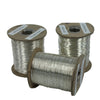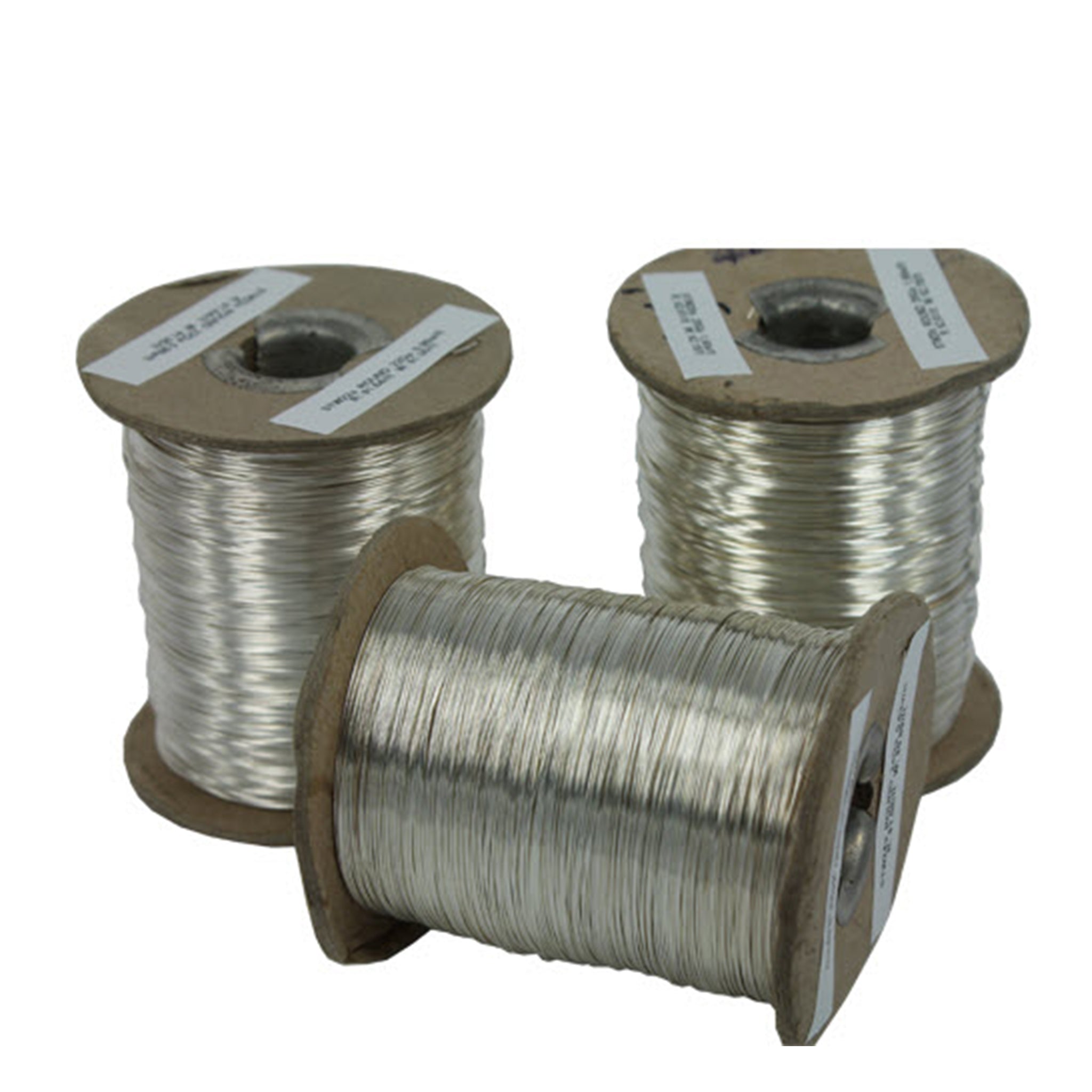Round Wire, Sterling Silver (.925)
Bezel|Fine Silver|Sheets
Sterling silver (.925) wire is a fundamental staple most commonly used by jewelers, jewelry designers and artists for myriad uses in their jewelry designs. From wire-wrapping to freeform shapes, sterling silver is the timeless "go-to" for any project. "Sterling" silver an alloy of at least 92.5% silver, with 7.5% of another metal (our sterling, like most commercial sterling available, is alloyed with 7.5% copper).
All our wire is SOLD BY THE FOOT (except for 10 gauge, which is sold by the inch) so you can easily order as much - or as little - as you need.
Round Wire is the most common wire shape that is used for just about every wire wrapping or forming design, making jewelry findings, or spirals.
"Temper" (Dead Soft, Half Hard) The temper of the metal refers to the relative "hardness" or "softness" of the metal. Dead soft wire offers very little resistance, making it easy to bend and shape. It doesn't form hard angles or hold its shape very well. Half-Hard wire feels less "bendy", making it great for making sharp bends, loops, or freeform shapes (like earwires) that you don't want to become easily malformed.
Let's get technical! In layman's terms, sterling silver has a crystalline structure which, when annealed (heated past approx. 1100°F / 590°C, also called "re-crystallization"), aligns itself into nice, tight communities with big gaps between them. The gaps between the crystalline communities allow it to move and bend easily (feels "soft"). The more you bend, hammer, stretch, or stress the metal, the more these crystalline communities get broken apart, the gaps in between them getting filled in with these "un-aligned" pieces. The fewer gaps there are in the communities the less room there is for them to bend easily, so it feels "harder". That's why (no matter what wire you're using) it's best to not bend wire too much in one place as you can work-harden it to the point where there's absolutely no room for the crystalline structure to fold into itself, and it breaks (that's what's happening when you bend a piece of metal back and forth until it breaks). This is also why, no matter what wire you are using, if you solder your wire shapes, they're going to be dead-soft once you're finished. In order for soldering to be successful, the metal has to be heated past the melting (flow) point of the solder, which in every case is hotter than the recrystallization temperature.
Available in the following sizes/tempers:
- STW28 - 28 Gauge, Half-Hard
- STW26S - 26 Gauge, Dead Soft or STW26 - 26 Gauge, Half-Hard
- STW24S - 24 Gauge, Dead Soft or STW24 - 24 Gauge, Half-Hard
- STW22S - 22 Gauge, Dead Soft or STW22 - 22 Gauge, Half-Hard
- STW20S - 20 Gauge, Dead Soft or STW20 - 20 Gauge, Half-Hard
- STW18S - 18 Gauge, Dead Soft or STW18 - 18 Gauge, Half-Hard
- STW16 - 16 Gauge, Dead Soft Only
- STW12S - 12 Gauge, Dead Soft Only
- STW10S - 10 Gauge, Dead Soft Only
- DIMENSIONS x x mm
- Metal type Sterling Silver
Sterling Silver - METAL COLOUR Silver
- MOUNTING STYLE
- SETTING TYPE
- SETTING STYLE






